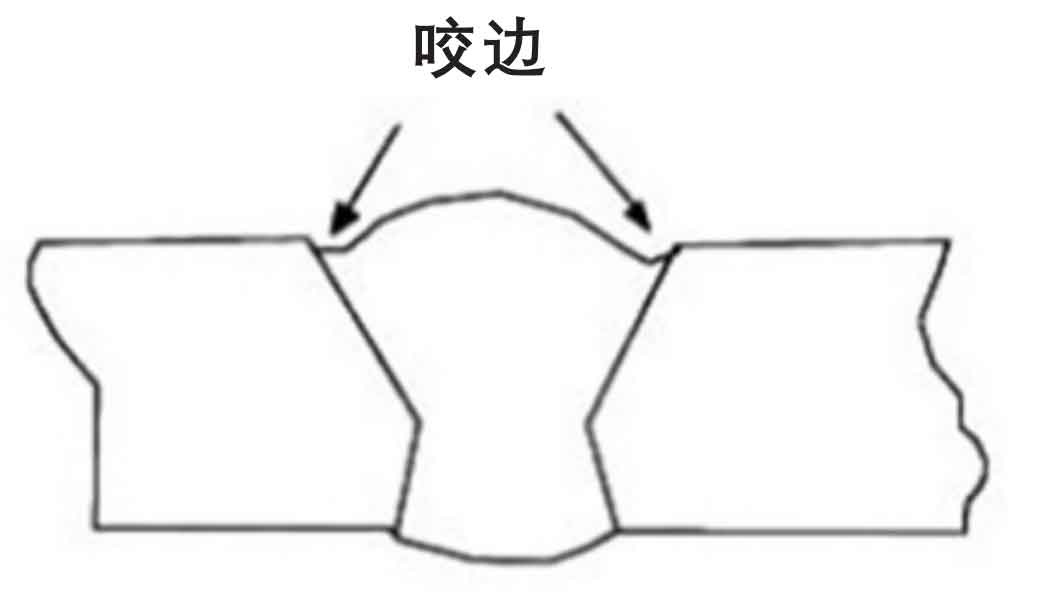Ideal Practices for Preventing Weld Undercut: Understanding the Basics
Ideal Practices for Preventing Weld Undercut: Understanding the Basics
Blog Article
Comprehending the Causes and Solutions for Undercut Welding in Steel Manufacture Procedures
In the realm of metal fabrication processes, the incident of undercut welding postures a significant challenge that demands a detailed understanding of its reasons and sensible solutions. The detailed interaction of numerous factors during welding operations can result in this unfavorable phenomenon, affecting the structural integrity and overall high quality of the welded joints - Preventing weld undercut. By exploring the origin of undercut welding and checking out efficient therapeutic measures, fabricators can boost the criterion of their handiwork and make certain the manufacturing of remarkable steel elements
Usual Root Causes Of Undercut Welding
Regularly ignored in metal construction, undercut welding occurs due to numerous variables that demand meticulous attention and competence to be efficiently reduced. One common root cause of undercut welding is too much warm input. When the warm input is too expensive, it can lead to the melting and succeeding erosion of the base product along the sides of the weld joint, developing a groove or undercut. Additionally, inappropriate welding strategies, such as utilizing the incorrect welding angle or take a trip rate, can additionally add to damage development. Inadequate securing gas insurance coverage is an additional vital element that can result in undercutting. Inadequate gas protection fails to protect the weld pool sufficiently, bring about oxidation and undercut flaws. Moreover, the option of welding criteria, such as voltage, existing, and cord feed speed, plays a substantial function in the occurrence of undercut welding. Recognizing these common causes is essential for executing safety nets and ensuring high-grade welds in steel construction procedures.
Influence of Incorrect Welding Parameters
Inaccurate welding specifications can substantially endanger the integrity and high quality of bonded joints in metal fabrication procedures. The impact of inaccurate welding specifications materializes in numerous means, leading to architectural weak points and defects in the welded components. Precise interest to welding specifications is vital to make sure the manufacturing of high-grade welds with the desired mechanical residential properties and architectural stability.
Impact of Improper Torch Angle
Improper lantern angle in welding operations can dramatically impact the top quality and integrity of the final weld joints in steel manufacture processes. Undercutting is a typical welding flaw where a groove develops along the weld toe, damaging the joint and jeopardizing its architectural integrity.
A torch angle that is too high can cause insufficient penetration, incomplete combination, and boosted spatter. On the other hand, a lantern angle that is also shallow can result in too much penetration, burn-through, and distortion of the base product. Preventing weld undercut. Appropriate lantern angle is vital for making certain consistent weld top quality, toughness, and appearance
To avoid damaging and other flaws brought on by inappropriate lantern angles, welders should be educated to web link preserve the proper torch angle throughout the welding process. Regular monitoring and modification of torch angles throughout welding can assist achieve sound welds with very little problems.
Role of Inadequate Welding Methods

One more aspect of inadequate welding methods is improper weld preparation. Poor cleansing of the base steels, wrong joint style, or insufficient edge prep work can all contribute to undercut welding. Inadequate securing gas protection or utilizing the incorrect kind of gas can result in incomplete blend and the development of undercut defects.
To attend to the role of insufficient welding methods in metal construction processes, it is necessary to give thorough training for welders. Appropriate education on welding specifications, joint prep work, and securing gas option can help avoid undercut welding and ensure premium welds in metal manufacture tasks.
Reliable Solutions for Undercut Welding
Dealing with undercut welding in steel construction needs carrying out reliable options to boost weld top quality and architectural honesty. Among the main remedies to fight undercut is to change welding parameters such as voltage, current, and travel speed to make certain appropriate warm input and fusion. By fine-tuning these click this site settings, welders can stop excessive melting of the base metal and filler product, minimizing the possibility of undercut development.
Furthermore, correct joint preparation is essential in protecting against undercut. Making certain tidy base steel surfaces without pollutants and making use of the suitable bevel angle can aid promote much better weld infiltration and decrease the danger of undercut - Preventing weld undercut. Utilizing ideal welding techniques, such as weaving or oscillating the lantern, can also help in dispersing heat uniformly and loading the weld joint sufficiently, decreasing the opportunity of undercut flaws
In addition, selecting the appropriate welding consumables, consisting of electrodes and filler steels, is important in alleviating undercut. Making use of products with appropriate chemical compositions and mechanical properties can add to attaining audio welds with marginal undercut. Normal examination and quality assurance actions need to also be executed to spot and resolve undercut issues without delay, guaranteeing the general integrity of produced steel components.

Verdict
To conclude, understanding the reasons and solutions for undercut welding in steel fabrication processes is crucial for attaining high-quality welds. By addressing usual reasons such as incorrect welding criteria, inappropriate torch angle, and inadequate welding techniques, welders can stop damaging and ensure solid, resilient welds. It is important to focus on these factors and implement reliable options to boost the general welding procedure and last item quality.

Report this page